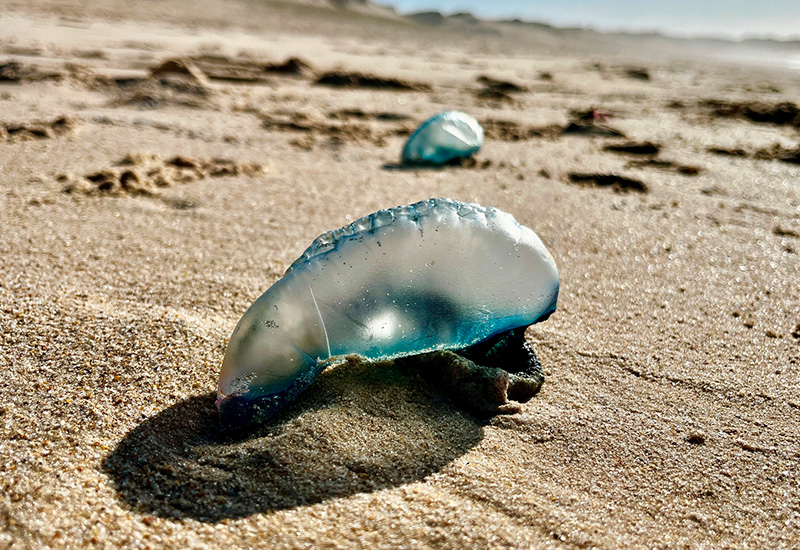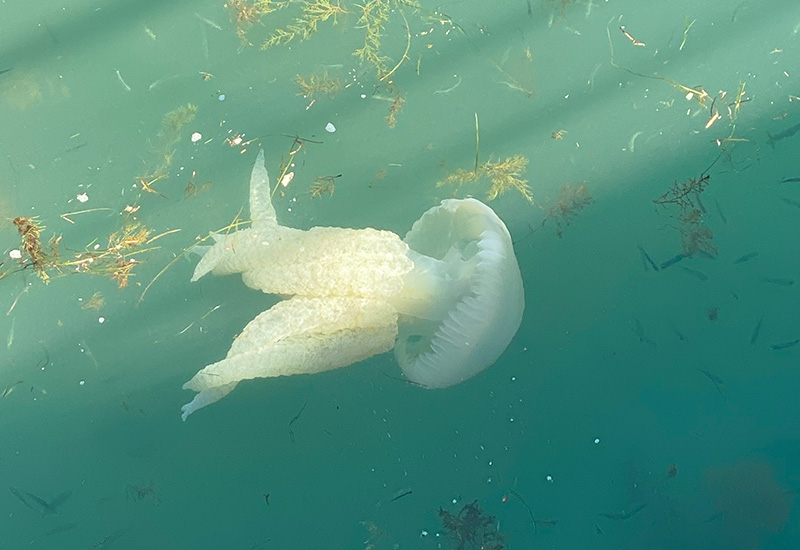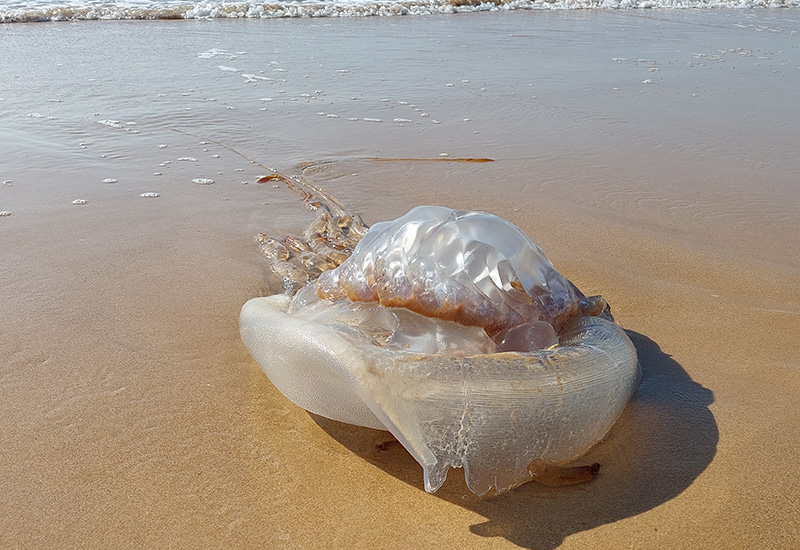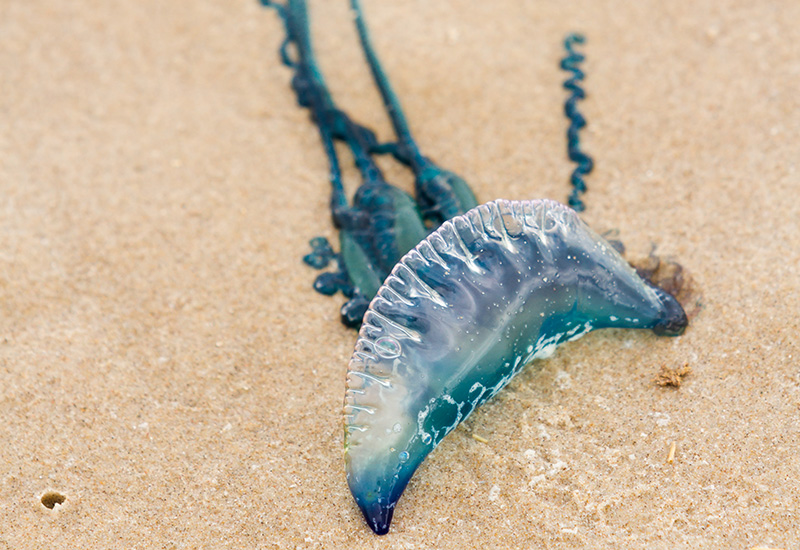With summer temperatures here since the beginning of May, beaches all over Portugal and especially in the Algarve, have, unsurprisingly, attracted thousands of beach-goers. Every year and with ascending frequency, people have been reporting jellyfish sightings and the occasional sting, so here is what you need to know.
The Atlantic Ocean brings cool waters to refresh those who enjoy a swim in the sea. A favourite day out for residents and visitors of all ages, the beach offers plenty of fun and relaxation, but we should always pay attention to the potential dangers as we are stepping into a natural environment.
The IPMA (Portuguese Institute for Sea and Weather) published a communication in April this year, warning people about the presence of a particularly dangerous creature found along the Portuguese shores – the Portuguese man o’ war (Physalia physalis). Often called a jellyfish, this is, in fact, a colony of organisms working and living together. Each organism has a specific function, like eating or mating and cannot live independently. They live at the water’s surface, kept afloat by a balloon bladder filled with gas that resembles the shape of a Caravela sailing ship used by the Portuguese during the Portuguese maritime expansion (XV-XVI).

Much like the vessel, this “animal” also comes heavily armed and poses a great threat to those who cross its path. The Portuguese man o’ war has a distinct violet-blue sail above water and long stinging tentacles that can reach 30 meters and are used for catching little fish and crustaceans.
Without other means of propulsion, this caravela goes wherever the currents and wind take them. Strong winds can sometimes blow these dangerous creatures to our beaches and here is where we need to be extra careful. Unintentional stings will cause pain, skin irritation, burning, swelling, fever and nausea.
What to do if you see one:
- Do Not Touch!! Even dead ones can still sting you
- Alert people around that might not be aware of its presence
- Inform the lifeguard or call the local maritime authorities
What to do if you get stung:
- Rinse the area with sea water – Do not use fresh water or alcohol disinfectant
- Do not rub
- Remove any bits that are still in contact with your skin – don’t use your hands
- Don’t rub the area
- Seek medical assistance (medical anti-venom emergency number: 800 250 250)
Although the Portuguese man o’ war poses the biggest threat, there are also a number of other true jellyfish and jellyfish-like creatures in the Portuguese waters. Not as toxic as the Caravela, the recommendations above must be taken to all encounters with these jellies as most of them have stinging tentacles that must be avoided.

The most common sightings in Portugal include the big Calpean jellyfish (Rhizostoma luteum), which is a large type of barrel jellyfish with a bell (head) up to 60cm in diameter; The Compass Jellyfish (Chrysaora hysoscella), usually spotted off the south coast (Algarve); The Jelly Blubber (Catostylus tagi), another large jelly whose Latin name comes from the river tagus (tagi) where it can be found in abundant numbers around Lisbon; and perhaps the most common jellyfish in Portuguese waters, the By-the-Wind Sailor (Velella velella). The latter is sometimes confused with the man o’ war for its bluish appearance and above-water sail but much less toxic.

An interesting project launched in 2016 called GelAvista studied these invertebrates and created an App and website in Portuguese and English. There, you can find out more about these animals and take part in this scientific project by reporting sightings spotted anywhere in Portugal.
Did you Know
Worldwide, there are over 2000 species of jellyfish and jellyfish-like creatures, including one found in temperate and tropical waters around the globe that is biologically immortal! The Turritopsis dohrnii is a thimble-sized organism commonly referred to as the immortal jellyfish. They can be eaten and killed by predators but will not ever die of old age.













